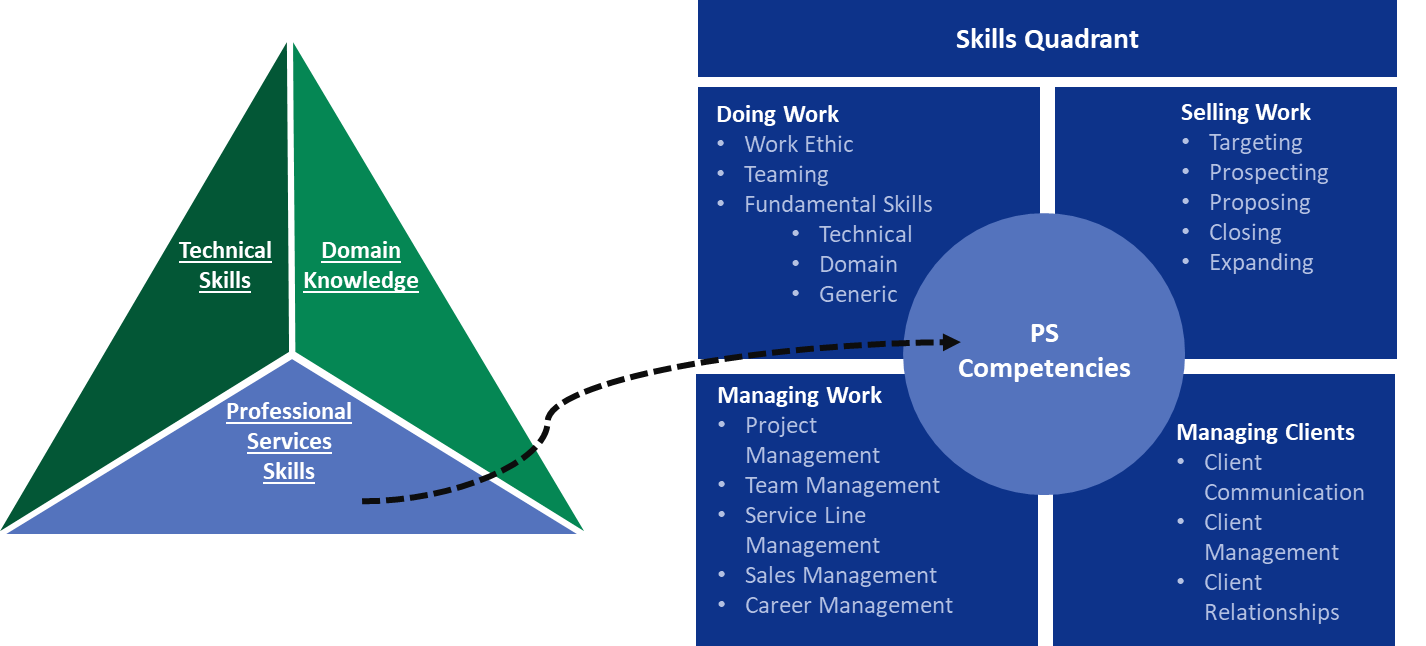In our last blog, we discussed that while embedded Professional Services businesses are being asked to do more, solve more, and grow more, there are impediments to these corporate mandates. Embedded product-attached PS businesses often have diamond-shaped staffing models that primarily employ skilled and tenured SMEs. As a result, the business model can be high-cost, difficult to scale, and higher-risk than necessary.
Therefore, solving the growth curve mandate often requires embedded PS businesses to shift their staffing models to a pyramid – or leveraged – model. This transition requires deliberation and education.
What is needed to make this transition?
As you know, a PS talent base requires a mix of skills to yield a well-rounded team to drive success. Therefore, a tailored, PS-specific talent development program can serve as the foundational mechanism for driving movement to the future state and enabling PS to play its strategic role in meeting corporate growth goals. This occurs by:
- Transitioning the current staffing modelto one that is more flexible and scalable.
- Cementing a culture of encouraging and enabling internal knowledge transfer, thereby reducing longer term business risk of having all core knowledge in the minds of a handful of Subject Matter Experts (SMEs).
- Building and enhancing the team’s soft and advisory skills.
- Decentralizing day-to-day decision-makingto those closest to the client.
- Instilling a growth-oriented
- Hiring additional capacity to fit the future state model; Updating the sourcing, interviewing, and onboarding
- Focusing more leadership time on being “player coaches” and less on resource management (i.e. scheduling and allocating), problem resolution, and client management.
This program must be well-rounded and incorporate technical skills and domain knowledge training, while focusing on developing the often-overlooked PS skills:

A well-designed talent development program enables the staffing model transition by focusing on developing PS skills that are crucial for achieving high growth and penetrating new accounts in new segments.

Read more about building an effective talent development program to foster the advisory skills and customer intimacy necessary to drive embedded PS success.
Written by: Mark Slotnik and Sarah Cushman
About the Authors:
Mark Slotnik has spent nearly 20+ years advising clients in the areas of designing and taking to market high-value business solutions, solution portfolio management, talent development, resource management, business process re-engineering and commercial software.
Sarah Cushman is a Senior Consultant with McMann & Ransford and has experience working with Fortune 500 companies to solve complex challenges, drive differentiation, and create long-term value.
